It is rather poetic that Liverpool have returned to being one of the most devastating transitional teams in European football this season at a time when they are about to embark upon their own transitional period off the pitch.
A sporting director is the higher priority in the short term, with whoever is appointed set to play a key role in appointing Jurgen Klopp’s successor. Liverpool’s director of research, William Spearman, is running the data-led assessment of managerial options for the prospective sporting director — focusing on young managers with a strong record of developing young talent and who have overachieved with the resources they have.
As far as Liverpool fans are concerned, the manager shortlist has an overwhelming frontrunner, with former midfielder and current Bayer Leverkusen boss Xabi Alonso the preferred candidate.
The gravitational pull of Liverpool’s sentimental value to Alonso — and vice versa — is something few other clubs can offer. That is, of course, aside from another of Alonso’s former clubs, Bayern Munich, who are also on the hunt for a new man in the hot seat this summer with Thomas Tuchel due to leave at the end of the season.
With that in mind, good forward planning suggests that a Plan B, C and D must be considered if Liverpool are not able to land Alonso — but who could they be?
Xabi Alonso and Sebastian Hoeness (Adam Pretty/Getty Images)
There are a few of the rumoured managers that we can strike from the list nice and early. Spurs manager Ange Postecoglou will not be leaving north London after just one year in charge.
While the departing Bayern boss Tuchel did succeed Klopp at Dortmund in 2015, it would be unlikely that the same would happen at Liverpool this summer given the circumstances of his departure from the current German champions.
As The Athletic have previously reported, Brighton’s Roberto De Zerbi, Newcastle United’s Eddie Howe and Lens’ Franck Haise have profiled well in Liverpool’s data model but are considered less likely to make Liverpool’s final shortlist.
One school of thought surrounding Alonso’s style of play is that it does not directly translate to the strengths of Liverpool’s current squad. Liverpool have returned to their ‘organised chaos’ mantra of direct, transitional football, while Alonso’s Bayer Leverkusen play with a 3-4-2-1 setup that focuses more on intricate, patient passing through the thirds, with greater compactness out of possession.
This is an oversimplified perspective for two reasons.
First, it underestimates Alonso’s tactical acumen to adapt to the players in his squad. During his time in charge of Real Sociedad B, he would regularly play with a 4-3-3 or 4-2-3-1 that was underpinned by principles Liverpool already have — principles focused on possession dominance, with progression through central areas and a fierce intensity to counter-press when they lose the ball.
Alonso has worked with some of the world’s top coaches during his playing career — from Pep Guardiola to Rafael Benitez, Carlo Ancelotti and Jose Mourinho. Each has their own style and strengths and the intelligent former central midfielder will have drawn on different parts of their management style and incorporated it into his own approach. A simple look at his initial approach at Bayer Leverkusen — where his immediate focus was fixing their defensive problems — was in stark contrast with the current style his side are playing.
Second, the pessimism surrounding a shift in style would be forgetting Liverpool’s own tactical flexibility, having adapted from a dogmatic 4-3-3 to a flexible 3-box-3 over the past 12 months under Klopp.
Liverpool’s data team will undoubtedly cast the manager net wide and be undeterred by factors such as the formation used by a manager. For example, Sporting Lisbon’s Ruben Amorim plays with a strict 3-4-3 but has similar principles based on high possession and high intensity to regain the ball in advanced areas.
Such is the transience of modern-day football that Amorim’s style has become more direct in attack this season since the arrival of battering ram Viktor Gyokeres, who thrives on runs into the channel in transitional moments. Music to the ears of a certain Darwin Nunez, you would suspect.
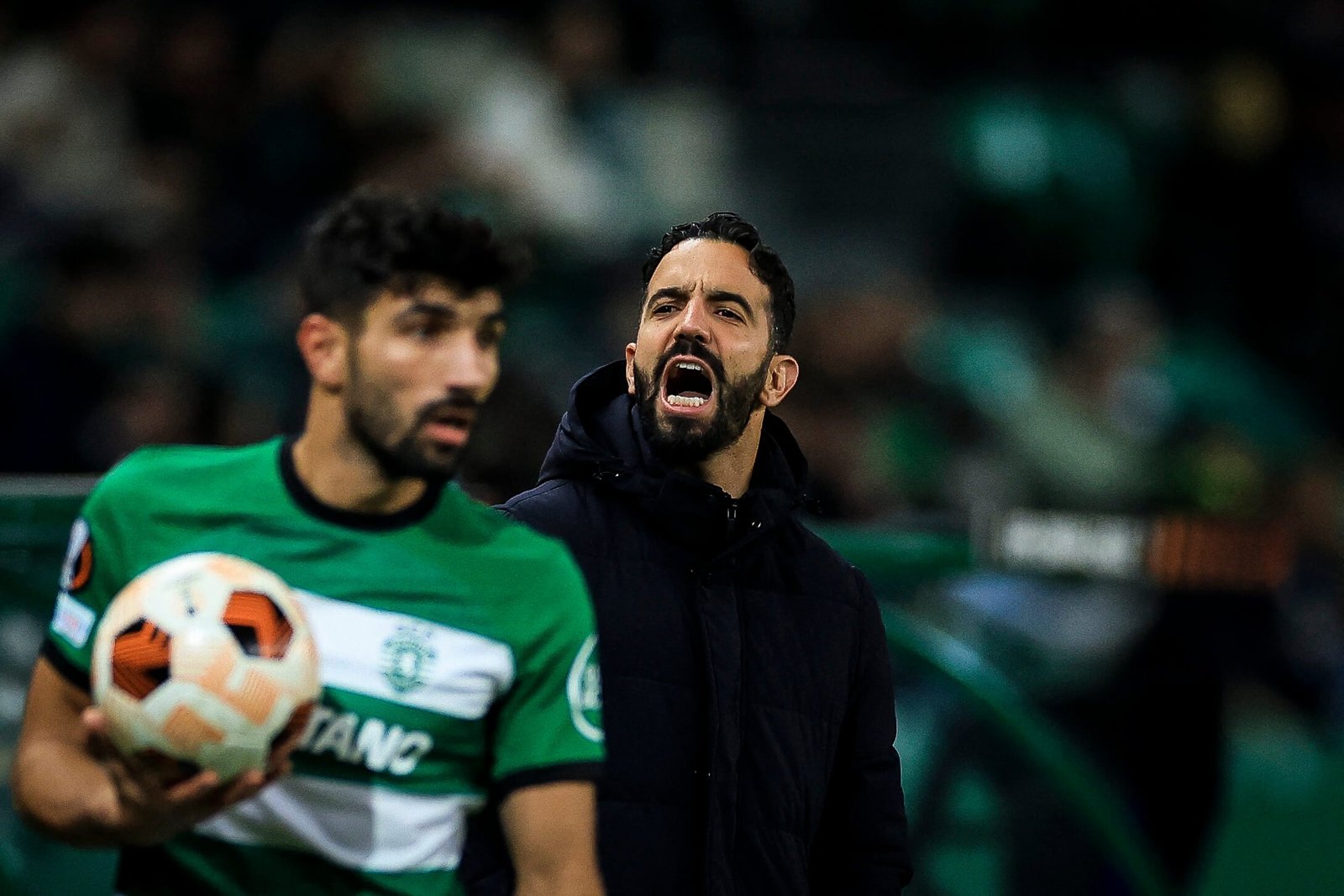
Ruben Amorim (Patricia De Melo Moreira/AFP via Getty Images)
Not only has Amorim evidenced his desire to bring young talent into the first team — including Goncalo Inacio, Matheus Nunes, Nuno Mendes and Ousmane Diomande — the 39-year-old’s CV is particularly impressive in improving the quality of the team with the resources he has had at his disposal.
This can be shown by Sporting’s ClubElo rating, a measure of team strength that allocates points for every result, weighted by the quality of the opposition faced. Sporting had stalled in the years preceding his arrival, but after a difficult start, Amorim guided them to a first league title for 19 years in 2021-22 — his first full season — with his controlled, possession-dominant style of play.
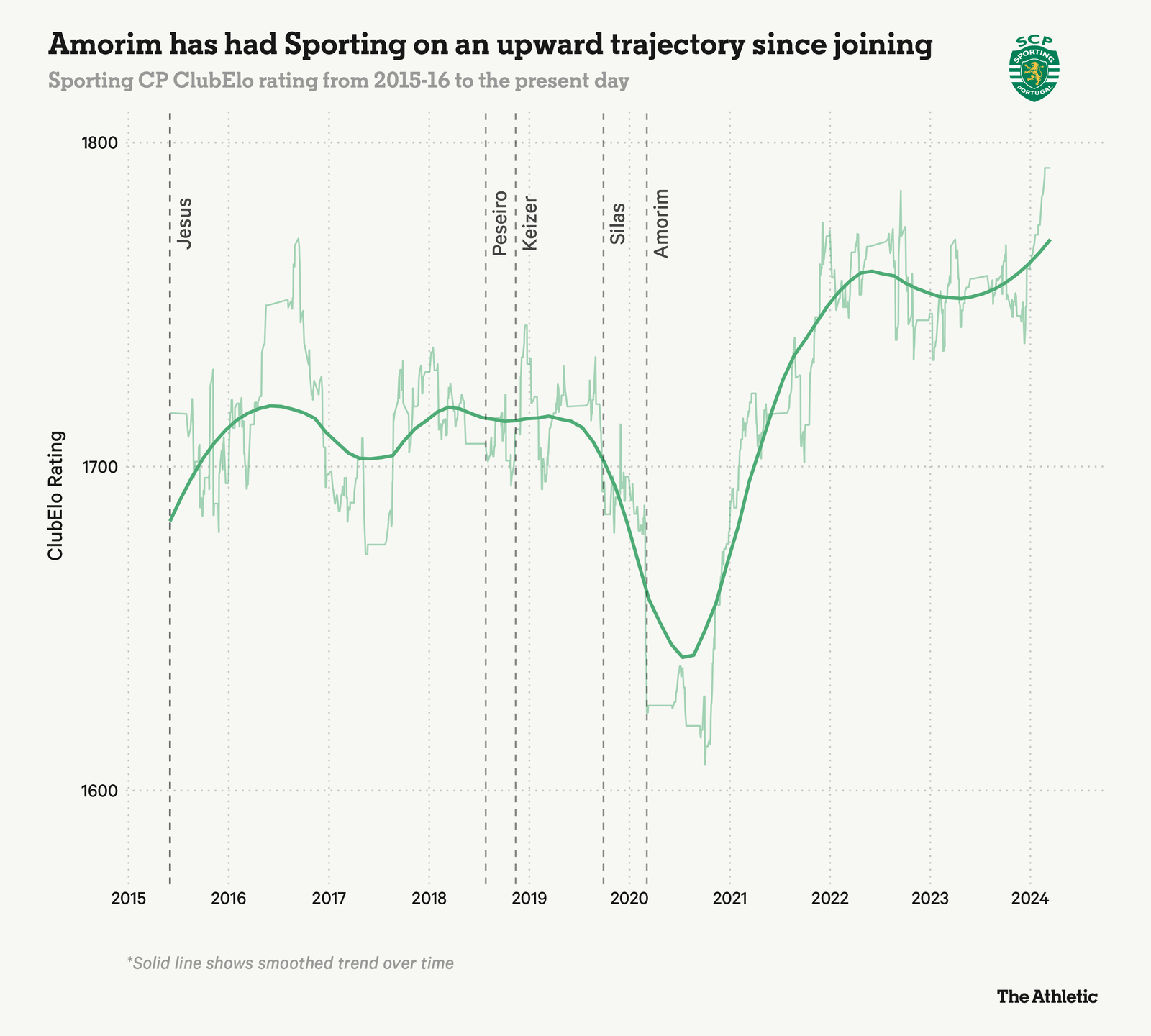
Amorim is known for his man-management skills and building positive relationships with his players. He may not have had the opportunity to work with the managers Alonso has, but he has learned from playing under the respected and experienced Jorge Jesus at Benfica.
Importantly, he would be attainable this summer. Reports suggest he has a release clause in his contract of around €10million (£8.6m; $10.8) — a relatively modest figure for a highly rated manager who is expected to be in demand with Barcelona, another European giant, hunting for a new leader.
Elsewhere, Julian Nagelsmann may not possess the same man-management skills as Jurgen Klopp, but the 36-year-old is a deep tactical thinker who is believed to profile well in Liverpool’s data model.
Using The Athletic’s new playstyle wheels, we can explore Nagelsmann’s only full season at Bayern Munich, which saw them clinch the Bundesliga with three games to spare.
As you can see below, Bayern’s style was, unsurprisingly, dominant. Despite their approach being predominantly based on control (Possession, 98 out of 99) and intricate play (Deep build-up, 98 out of 99), Nagelsmann’s side were equally adept at springing forward quickly (Patient attack, 49 out of 99) and punishing their opponents with relentless gegenpressing (Intensity, 92 out of 99).
As evidence of their attacking potency, only Erik ten Hag’s Ajax registered a higher expected goals value per 90 than Nagelsmann’s title-winning side (Chance creation, 98 out of 99) across Europe’s top seven leagues.
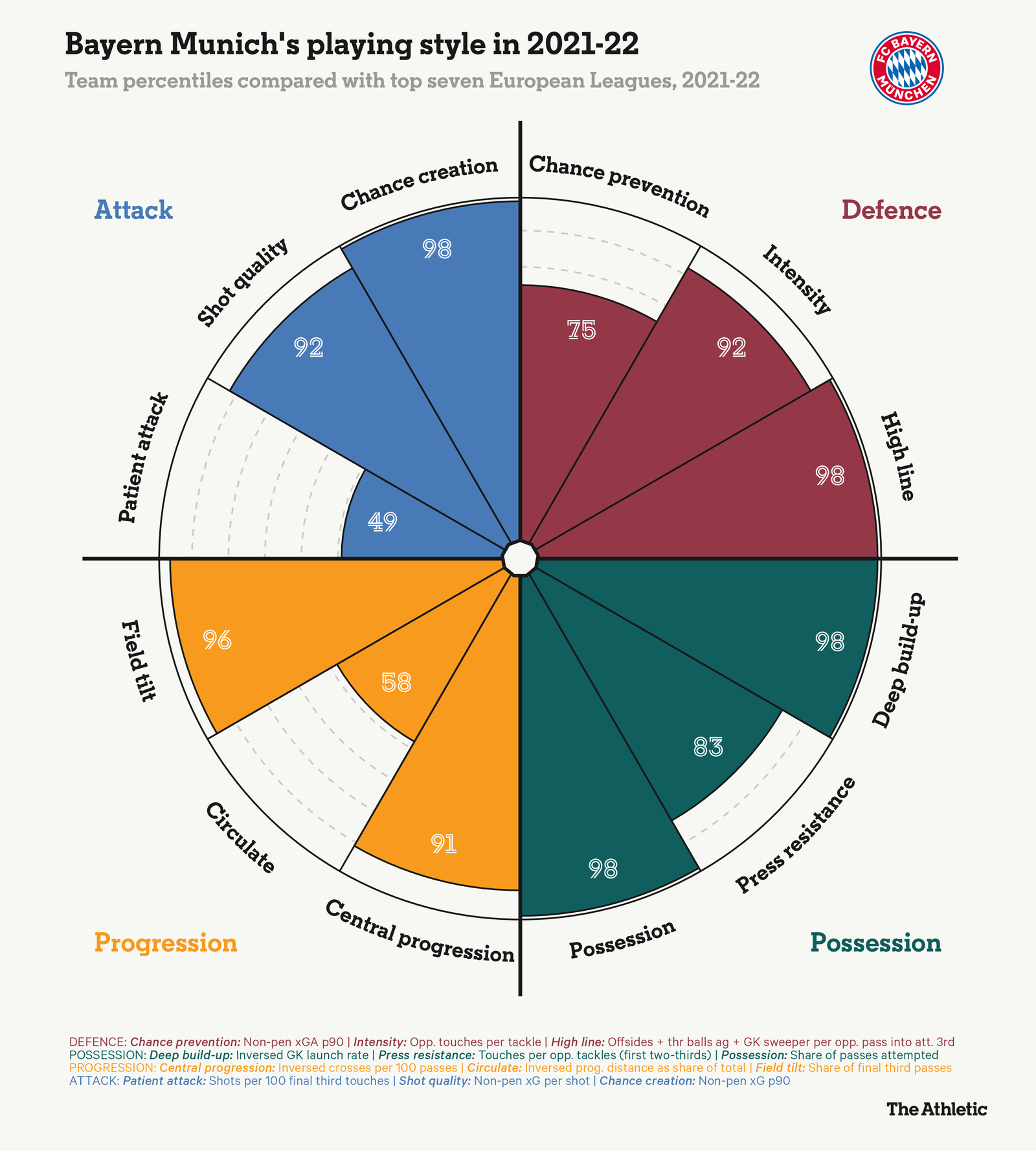
The positive spin on Nagelsmann’s style of play is that he is versatile, flexible and pragmatic to ensure his ideas are related more to his principles than a specific system dictated by formation.
The negative spin is that his tendency to tinker his message, formation and tactical setup between games can serve to undermine his approach — with Bayern players having complained that Nagelsmann was overcomplicating things in training and making too many changes during games.
Logistically, appointing Nagelsmann would also put Liverpool on the back foot going into the new season, with him leading the German national team in the European Championship this summer — meaning he could not take charge until mid-July if he were to join.
He would also have a relationship to repair with Liverpool’s supporters, who will remember his “not in awe” comments when, aged 30, he arrived at Anfield with his Hoffenheim side in a Champions League qualifier in 2017. Many thought he disrespected Anfield’s atmosphere while simultaneously firing it up. His side found themselves 3-0 down after 21 minutes.
So, a manager’s current tactical structure is not strictly prescriptive to how they might set up in a new role, but it is worth identifying which clubs across Europe’s top seven leagues have a stylistically related approach to Liverpool this season.
To do this, we can use our similarity analysis to map out the top five most similar sides — based on our 12 metrics outlined above.
As you would expect, there is a strong German influence in the results, with RB Leipzig, Stuttgart and Klopp’s former employers Borussia Dortmund among the most similar matches.
Liverpool’s low “Patient attack” rating (28 out of 99) highlights the fast, transitional style Klopp’s side have played with this season, with no Premier League team having more direct attacks — defined by Opta as “open play sequences that start inside the team’s own half, has at least 50 per cent movement towards the opposition’s goal, and ends in a shot or a touch in the opposition box” — than their 68 this season.

Meanwhile, Liverpool’s fierce counter-pressing has returned this season as they often squeeze the pitch (High line, 84 out of 99) and quickly swarm the opposition if they do lose possession (Intensity, 91 out of 99).
If it were not for the performances of Alonso’s Bayer Leverkusen, Sebastian Hoeness would be on the lips of far more people due to the job he has done at Stuttgart this season.
Having been appointed at the end of the 2022-23 season, the 41-year-old guided Stuttgart away from relegation and nearly one year on, they are looking to secure a place in next year’s Champions League.
From a low-possession, counter-attacking team last campaign, Hoeness has transformed Stuttgart into a dominant, progressive side who are now clinical in pressing from the front (Intensity, 76 out of 99). Only Alonso’s Leverkusen (50) have generated more shot-ending high turnovers than Stuttgart (37) this season.
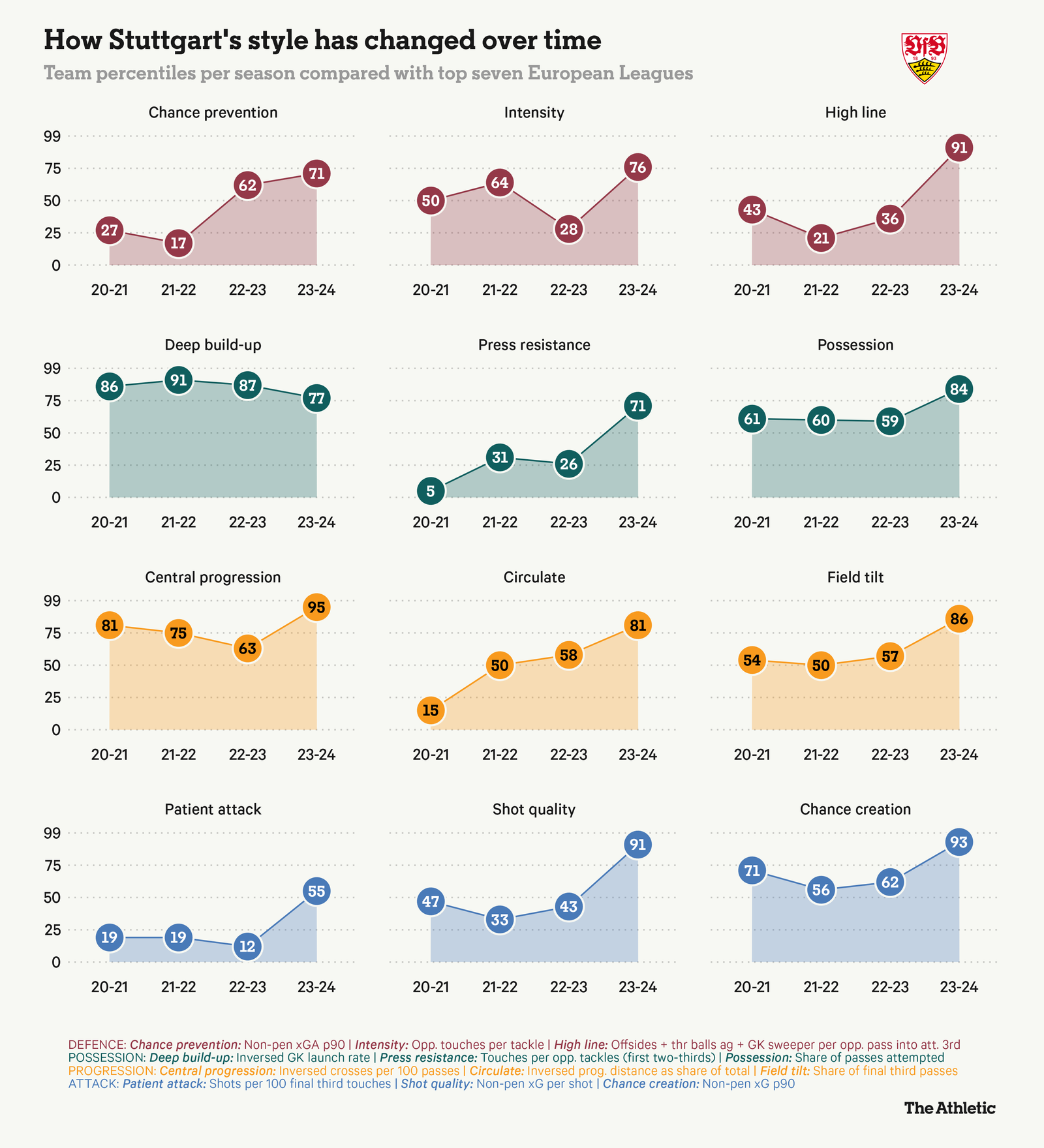
Unsurprisingly, Hoeness’ style draws parallels with the Red Bull model of football based upon high intensity and aggression on and off the ball — and with good reason. Stuttgart’s boss spent three years coaching within RB Leizpig’s youth system before winning Germany’s third division with Bayern Munich’s second team in 2020 – the first reserve team to ever win that title.
With his experience in youth setups, Hoeness is comfortable bringing young players into his first team — with young playmaker Enzo Millot (21) and former Bayern Munich midfielder Angelo Stiller (22) trusted with key roles in Stuttgart’s European push this season. Similarly, Hoeness worked with United States international Chris Richards at Bayern and Hoffenheim, with the 23-year-old’s performances earning him a move to Crystal Palace last season.
His contract runs until 2025, so by the summer, he would only have 12 months remaining, meaning compensation would be small. He has plenty of admirers still at Bayern Munich, not least his uncle, Uli Hoeness, who is Bayern’s honorary president. The likeness might be a little too on the nose, but if Liverpool were to seek out another talented German coach from the Bundesliga, Hoeness has good reason to be in that conversation.
There is an obligation for the modern manager to be synonymous with the buzzwords of “attractive, high-energy, attacking” football. It certainly helps if the manager is also able to demonstrate title-winning success with such principles of play.
Arne Slot falls into this category having led Feyenoord to only their second Eredivisie title in 20 years last season — losing just two games in the process.
Slot will most commonly set up with a 4-2-3-1 formation in possession, using a midfield double pivot to progress centrally through the first line of pressure. Beyond the high-possession, high-pressing, clinical attacking football evidenced by their playstyle wheel above, the 45-year-old has shown that he can achieve success without frivolous spending — a trait that will be attractive to FSG and their strategic approach.
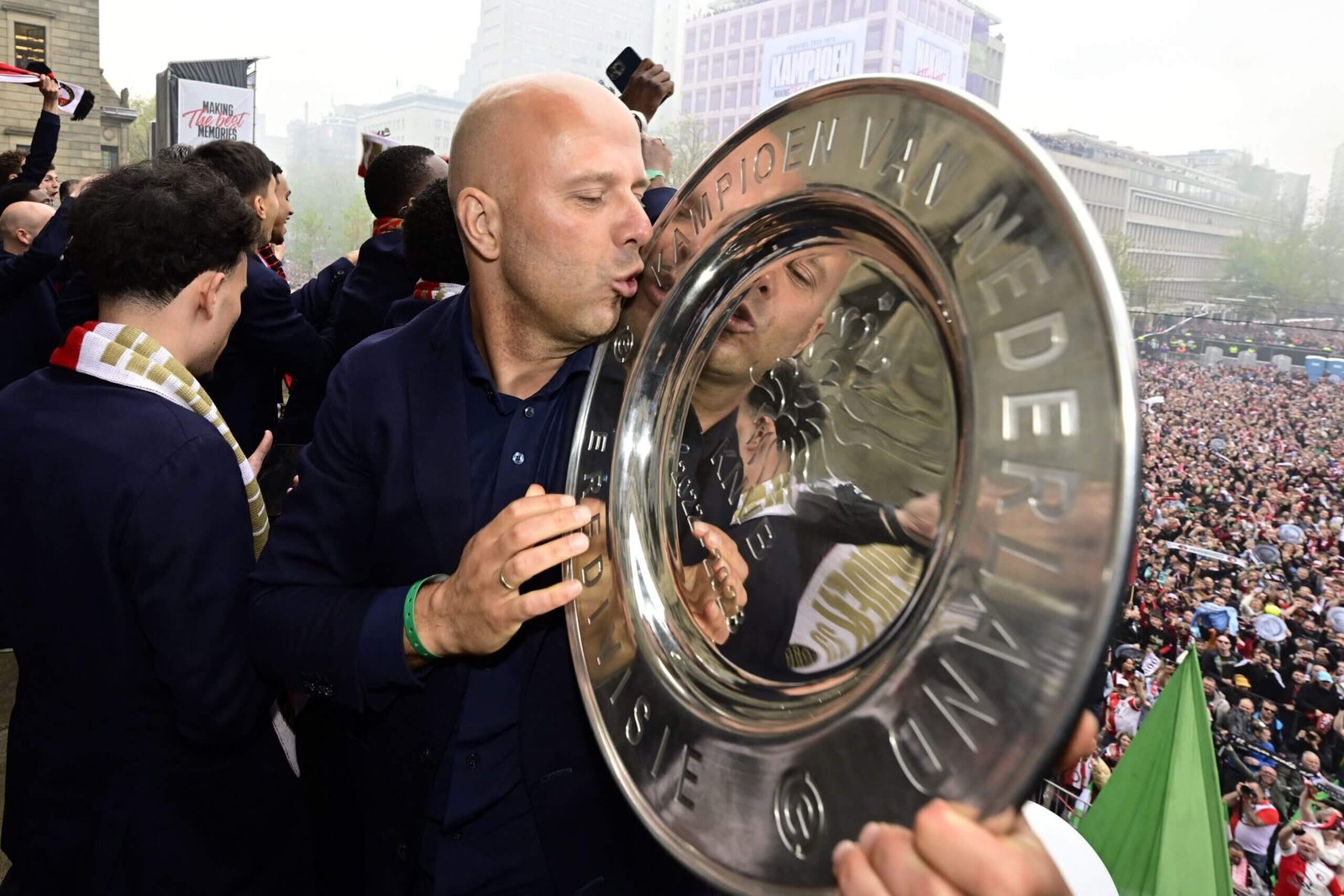
Arne Slot (Olaf Kraak/ANP/AFP via Getty Images)
Feyenoord have not spent more than €8million on a player in the club’s history, with a revenue that is comfortably trumped by Dutch rivals PSV and Ajax. With the model that Feyenoord have, Slot has demonstrated his penchant for improving the value of the players he has and promoting youth from the academy. Sound familiar?
Slot was highly coveted by Tottenham Hotspur last summer and was close to moving to north London before choosing to remain in the Netherlands and extend his contract until 2026. At the time, Slot said his wish was “to stay at Feyenoord and continue to build on the foundation that has been laid over the past two seasons”.
Whether Slot could be prised away from the Netherlands this summer is unknown, but the data shows how his aggressive, dominant style of play is ideally suited to Liverpool’s current crop.
Our final data-led pick takes us to France, where Lille’s Paulo Fonseca has garnered a lot of attention for his attractive style of play in Ligue 1 this season.
Typically employing a 4-2-3-1 system, the 50-year-old has shown a willingness to adapt to maximise the attributes of his players. Having managed in Portugal, Ukraine, Italy and France, the exposure to different leagues and different stylistic approaches is regarded as a huge positive in Fonseca’s skill set.
As you can see by Lille’s playing style above, Fonseca’s mantra is to dominate the ball and draw teams onto them (Deep build-up, 84 out of 99), before springing forward with pace and purpose (Patient attack, 49 out of 99).
“Our game is attraction,” Fonseca recently told The Athletic. “We want teams to press us so that we can find space, so we take many risks. Especially when we build up because our first phase — with our different structures and how we accelerate and decelerate the game — is what allows us to dominate.”
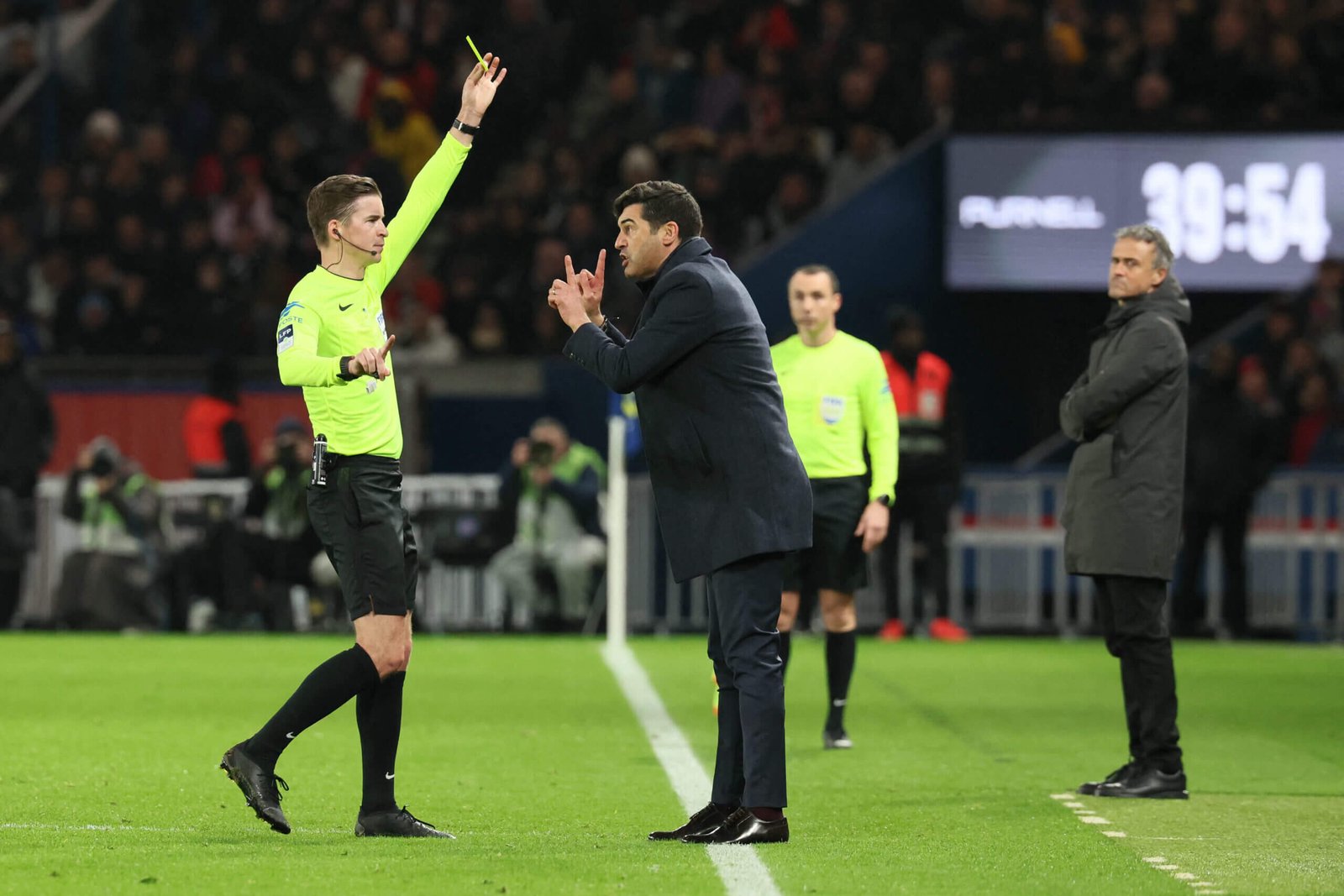
Paulo Fonseca (Alain Jocard/AFP via Getty Images)
Fonseca might be an outside shout in the eyes of many, but he would be available come the summer. His contract at Lille is due to expire at the end of the season and earlier this month it was reported no talks over a renewal had taken place.
Liverpool will leave no stone unturned in their search for a new manager and the club will not be rushed into confirming a chosen candidate.
“The way we operate as a football club is to ensure that we’ve looked at all the information, all the data, we’ve done our proper due diligence,” said chief executive officer Billy Hogan. “Then we’ll make a decision and we’ll have an announcement at that time.”
With Liverpool still fighting on multiple fronts, the situation must be delicately handled to ensure there are no distractions on the pitch. In the same breath, fans will be acutely aware of the increasing uncertainty hanging over the club.
It’s time to turn that longlist into a shortlist.
(Top photos: Getty Images)
Read the full article here


